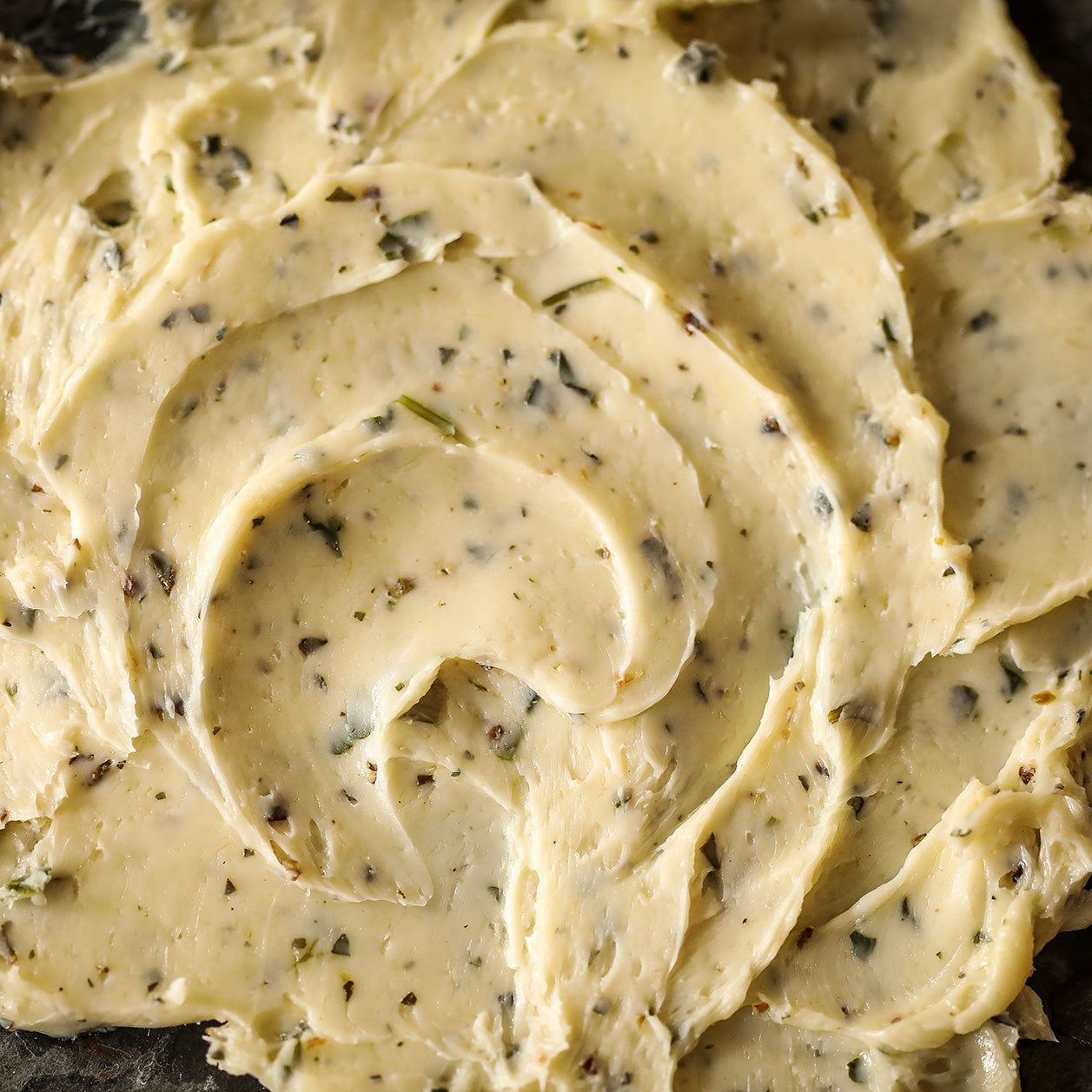

The Great Debate of Salted vs Unsalted Butter
To salt or not to salt? Whether you’re baking or following any other kind of recipe, you might wonder if you can substitute salted butter for unsalted, and vice versa. The short answer is yes, but we’re here to give you a full breakdown of the differences between salted vs unsalted butter, when it’s best to use each, and all the tips for making the swap. (Spoiler alert: Epicurean Butter is salted and can be used in place of just about any butter in anything!)
Is there a huge difference between salted and unsalted butter?
About salted butter
In salted butter, the salt is added during the churning process and gives the butter that savory taste and a longer shelf life thanks to salt’s natural preservative qualities. Usually salted butter lasts 5-6 months refrigerated and unsalted butter about three months. Both can be frozen, which triples its life.
How much salt is in salted butter?
According to the National Dairy Council, on average, butter contains 1.6-1.7 percent salt. Typically, you’ll find about 80 mg of salt per tablespoon. However, different types of salt (kosher salt, sea salt, and table salt ) have different surface areas—so take this estimate with, ahem, a grain of salt. For example, one teaspoon of kosher salt would result in much saltier food than table salt.
About unsalted butter
Just like the name implies, unsalted butter is churned without adding any salt. The biggest advantage of using unsalted butter lies in the amount of control it gives a cook over how much salt goes into a dish. Unsalted butter is most commonly used in baking to create a more neutral, creamy foundation to build on with additional ingredients. This is because many of these recipes require precision, where the wrong amount of salt might throw off the chemistry of the whole dish.
When to use salted vs unsalted butter
Salted butter is going to add extra flavor when used as a spread on things like toast, pancakes, and biscuits. The only disadvantage to using salted butter in a dish instead of unsalted butter is the ratio of salt needed in order to perfectly replicate a recipe. For spreads and savory cooking, your go-to is salted butter. You can swap out unsalted butter for salted butter in baking, but it requires some thought, tweaking, and a little math.
Salted vs unsalted butter in baking
Salt is a critical component in making many baked goods because it brings out the flavor of individual ingredients that can change the taste of bread, cookies, and pastries entirely. The amount of salt can also impact the water content, which affects gluten and texture.
So if you want to swap out the unsalted butter in your sugar cookie recipe, either because you only have salted butter in the fridge or you want to experiment with adding in a new flavor element (like making Honey Butter Cookies), the trick is to reduce the amount of salt listed in the recipe.
Substituting salted and unsalted butter
A general rule of thumb is to reduce the salt by half. For example, if a recipe calls for 1 tsp of salt and you're using salted butter, use only ½ tsp of salt. Similarly, if a recipe calls for salted butter, and you only have unsalted butter, you can add a pinch of salt to the recipe to compensate. If you’re wanting to just take your favorite sugar cookie recipe and swap out the unsalted butter for Epicurean Butter Honey Flavored Butter, you could take a recipe like this one and reduce the ½ teaspoon of salt down to ¼ teaspoon.
This isn’t an exact science, and you might want to check your salted butter labels to see how much salt you’re adding into the recipe to calculate what you should remove. If you are making cinnamon rolls that call for ½ cup unsalted butter and 2 teaspoons of salt and you want to swap the unsalted butter with Epicurean Butter Cinnamon & Brown Sugar Flavored Butter for some extra cinnamon and sugar flavor, you might want to be a bit more accurate with your salt measurements. After all, you’re working with a little bit of a different scale of the amount of salt and its impact on bread dough versus cookies. You could also make your life easier and bake this Cinnamon Pull-Apart Monkey Bread in less than an hour.
Salted vs unsalted butter for cooking
Making butter swaps in the kitchen is much easier when cooking savory dishes. Most meals instruct you to “add salt and pepper to taste”—which leaves room for lots of flexibility. Have no fear when swapping out any of your butter, whether it’s salted for unsalted in your casserole or plain butter for any of the flavors in our Steak Butter Variety Pack to top your next filet.
Save time with Epicurean Butter
With Epicurean Butter, you don’t have to sacrifice taste to take a shortcut and save time. You can skip some extra prep steps and trim down your next grocery list with flavored butter. Don’t worry about whether you’re going to mess up. Our chefs here at Epicurean Butter have already done the work to blend perfectly portioned fresh herbs with butter for easy cooking and delicious flavor. Get on our email list below for exclusive butter discounts, new recipes, and more.
Let's get social
Tag us at @epicureanbutter on Instagram when you use our flavored butter for a chance to be featured. We love to see how Epicurean Butter helps make your life easier and your food tastier.
